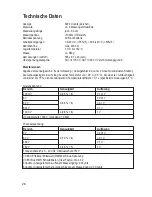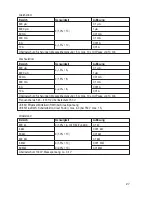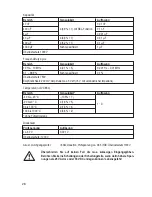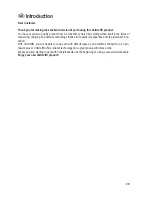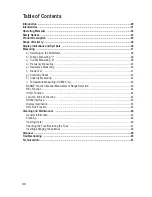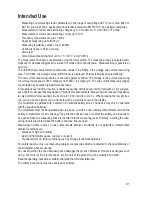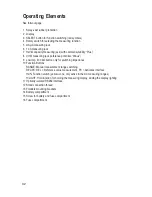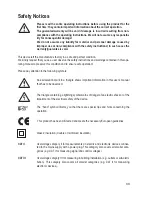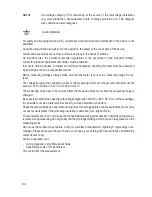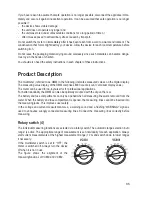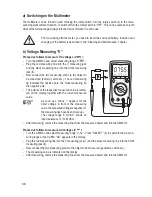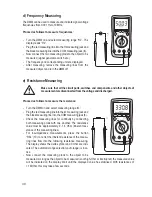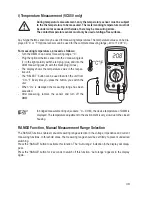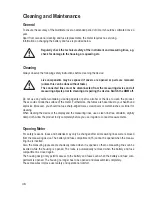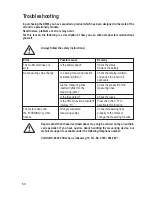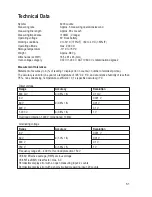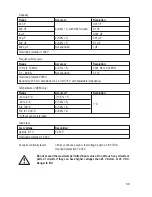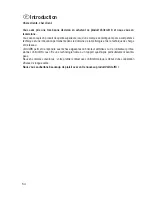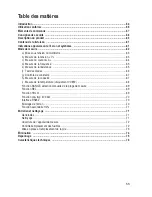
40
d) Frequency Measuring
The DMM can be used to measure and indicate signal voltage
frequencies from 0.001 Hz to 10 MHz.
Proceed as follows to measure frequencies:
-
Turn the DMM on and select measuring range “Hz”. The
display reads “Hz”.
-
Plug the red measuring line into the Hz measuring jack and
the black measuring line into the COM measuring jack (8) .
-
Now connect the two measuring prods to the object to be
measured (signal generator, switch etc.).
-
The frequency and corresponding unit are displayed.
-
After measuring, remove the measuring lines from the
measured object and turn the DMM off.
e) Resistance Measuring
Make sure that all the circuit parts, switches and components and other objects of
measurement are disconnected from the voltage and discharged.
Proceed as follows to measure the resistance:
-
Turn the DMM on and select measuring range “Ω”.
-
Plug the red measuring line into the Ω measuring jack and
the black measuring line into the COM measuring jack (8) .
-
Check the measuring lines for continuity by connecting
both measuring prods with one another. The resistance
value must be approximately 0 - 1.5 Ohm (inherent resi-
stance of the measuring lines).
-
For low-impedance measurements, press the button
“REL” (10) to not let the inherent resistance of the measu-
ring lines flow into the following resistance measuring.
The display shows the delta symbol and 0 Ohm are indi-
cated. The automatic range selection (auto range) is inac-
tive.
-
Now connect the measuring prods to the object to be
measured. As long as the object to be measured is not high-Ohm or interrupted, the measured value
will be indicated on the display. Wait until the displayed value has stabilised. With resistances of
>1 MOhm, this may take a few seconds.

